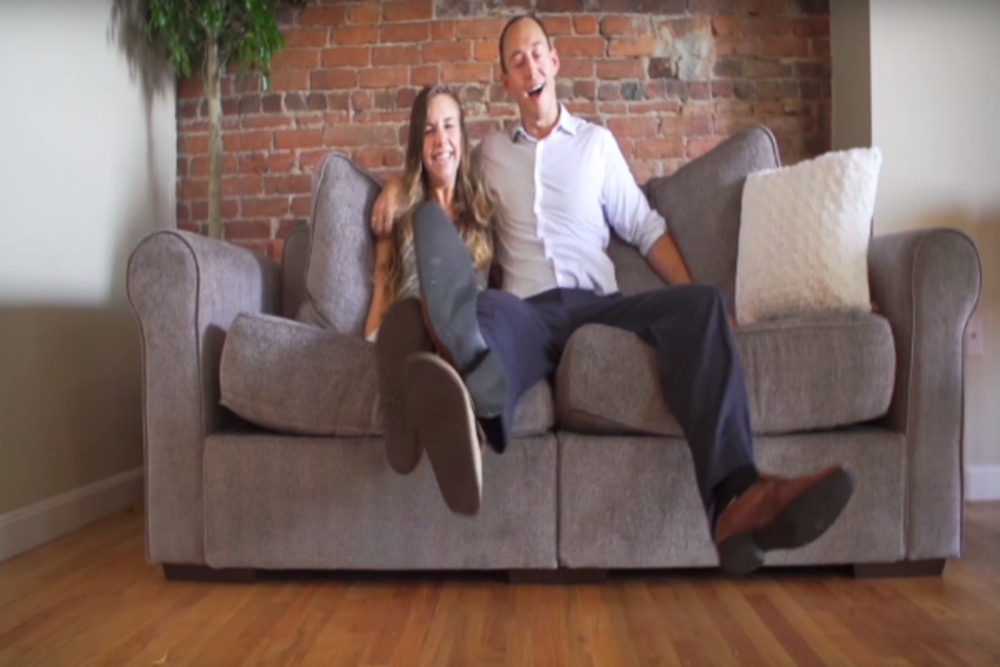Let’s face it: Moving is the worst. As someone who has moved 10 times in the past seven years, I would know.
Most of my residence hopping took place in college. I left the Midwest and headed east to attend Boston University, where I switched dorms or moved off campus every year.
Just writing this blog post brings back a flood of distressing moving memories—like the time I dropped my television on my toe and had to finish packing with a bag of frozen peas wrapped around my foot. Good times.
Thankfully, I was never alone in my moving-day misery. September 1 is the one day when more than half of the city’s renters begin a new lease. Actually, The Boston Globe reports that 63% of rental property leases in Boston start on this day. What’s more, the City of Boston revealed that there were 2,282 moving truck permits issued for August 28 to September 3 this year.
If there’s one thing every good marketer knows how to do, it’s turn a customer pain point into an opportunity for engagement and service. Furniture retailer Lovesac proved that it could do just that when it decided to get in on Boston’s moving-day madness and drive brand awareness through its #MovingDayLove campaign.
Boxing up the old brand perception
Lovesac has come a long way since its freshman year.
In 1995 Shawn Nelson developed the Sac: a giant beanbag-like creation that’s filled with foam instead of beanbag beads. After a few years of selling the Sac at local and college events, CEO and Founder Nelson opened his first store in 2001. Then in 2005 he debuted the Sac’s sister product the Sactional—a configurable, expandable couch. Now there are about 60 retail locations across the country, as well as an e-commerce destination, all of which he grew through word of mouth.
However, the company has a brand perception problem. Although Nelson started the business selling Sacs to his college classmates, he doesn’t consider Lovesac a college furniture company. In fact, he claims that most of the brand’s products exceed a typical student’s budget. For instance, the smallest Sac costs $560 and a 10-seat Sactional can cost upwards of $16,000.
“Given our name and our history, Lovesac has always been perceived as this happy-go-lucky, almost college furniture company…. The truth is we’ve always been too expensive for most college kids,” he says.
Instead of luring college students, Lovesac primarily appeals to affluent, millennial families—“want-it-all parents,” as Nelson calls them. But the company needed a way to better attract this audience and convey the versatility of its products.
To generate this brand awareness, Lovesac’s team decided to tackle the one problem that many furniture owners face: moving the couch.
According to a study conducted by Harris Poll on behalf of Lovesac, 40% of the more than 2,000 U.S. adults surveyed agree that the couch is the most stressful piece of furniture to move. In fact, 25% of respondents admit to abandoning their couches altogether.
So the brand launched the #MovingDayLove campaign and used social media to rescue Boston movers in need.
Reaching out to the community
The campaign was fairly straightforward: On September 1, Bostonians could share their moving day struggles on Instagram and Twitter by tagging @Lovesac and including the hashtag #MovingDayLove.
Hey, @Lovesac my boyfriend sprained his ankle carrying our big heavy couch! Can you show us some #MovingDayLove?
— Natalie (@natheawesome) September 1, 2015
Lovesac worked with advertising agency Mullen to identify these posts in real-time and then message people privately to acquire their contact information and housing address. Once the brand obtained this information, Lovesac’s team was able to meet up with the distressed movers and, through its partnership with moving company Gentle Giant, offer assistance, such as physical help, cold water, cleaning supplies, or a new Sactional.
“It comes back to our name,” Nelson says, “We can’t wear the word ‘love’ on our chest on a T-shirt and not give back to the world.”
Moving across channels
To promote the campaign, Lovesac ran Facebook and Twitter ads targeting non-homeowners in the Boston area in the weeks leading up to the initiative. The company also sent emails to its subscribers in the Boston area, and encouraged engagement through PR, radio, and social media. Plus, the brand hosted a blogger and influencer party in late August to spread word about its Sactionals.
As for maintaining buzz after the campaign, Lovesac worked with social media influencer agency Clever Girls to host a Twitter party on September 3 and generate conversation around Lovesac and moving. Participants had the opportunity to win Lovesac giftcards and couches. The brand also created a video summarizing the campaign (shown above), which it posted on its social media channels.
“The campaign through and through was one where people really got a chance to experience the love, whether they were in the Boston area or just taking part on Twitter,” says Lovesac Marketing Specialist Mike Majlak. “We really loved how we were able to extend the story from a local activation to a national story through that process.”
Bringing home the results
The campaign may have moved a few couches, but was it enough to move the needle? At the time of this writing, the campaign video had received 75,507 views—with the majority of them coming from Facebook. Majlak also says that the brand has seen an uptick in traffic and sales for its Boston store locations.
It looks like this campaign was a great move for Lovesac’s marketers and consumers, alike.








